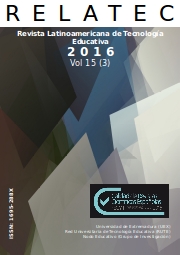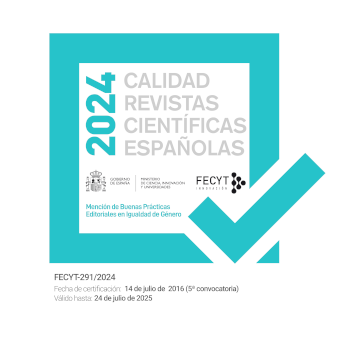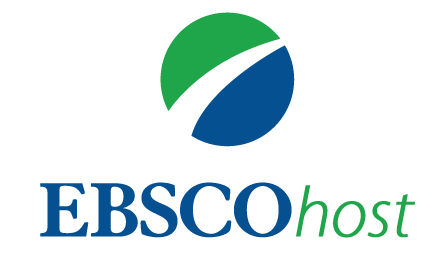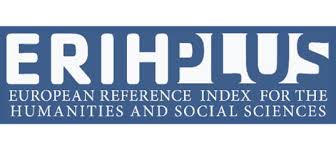La personalización de ambientes educativos digitales basados en estilos de aprendizaje y estilos cognitivos. Una revisión sistemática sobre su eficacia y percepción / The personalization of digital educational environments based on learning styles...
DOI:
https://doi.org/10.17398/1695-288X.15.3.141Palabras clave:
TIC, Enseñanza Asistida por Ordenador, Estilo Cognitivo, Enseñanza Individualizada, Adaptabilidad / ICT, Computer Assisted Instruction, Cognitive Style, Individualized Teaching, Adaptability.Resumen
Los ambientes educativos digitales personalizados (AEDP) se adaptan a diferentes características de los estudiantes en los procesos de enseñanza y aprendizaje. Los factores abordados con mayor frecuencia en los AEDPs para efectuar procesos de personalización son los estilos de aprendizaje (EA) y los estilos cognitivos (EC) de los estudiantes (Nakic, Granic y Glavinic, 2015). El objetivo de este estudio consistió en realizar una revisión sistemática de estudios que hayan indagado por la eficacia y la percepción de los estudiantes en diferentes niveles educativos al interactuar con AEDPs basados en EC y EA. Con el fin de identificar indicadores de producción e impacto, caracterizar el tipo de personalización efectuada y describir la metodología empleada en los estudios. Se analizaron publicaciones realizadas entre los años 2005 y 2016. Se efectuó la búsqueda de información en las bases de datos ScienceDirect, EBSCOhost Web, Wiley, Web of Science, ERIC y Proquest. Los resultados permiten identificar y describir fortalezas y debilidades de estudios empíricos alrededor en la implementación de AEDP basados en EA y EC en entornos educativos. La mayoría de los estudios evidencian ganancia en el logro de aprendizaje y una percepción positiva cuando los estudiantes interactúan con éstos entornos de aprendizaje. En síntesis, la personalización en entornos digitales educativos es una línea de acción que contribuye a mejorar los procesos de enseñanza y aprendizaje.
Abstract
The personalized digital educational environment (PDEE) adapt to different individual characteristics of students in the teaching and learning processes. The most frequently discussed factors in the PDEE s for personalizing processes are the learning styles (LS) and the cognitive styles (CS) of the students (Nakic, Granic & Glavinic, 2015). The aim of this study was to carry out a systematic review of studies that investigated the efficacy and perceptions of students at different educational levels when interacting with PDEEs based on LS and CS. In order to identify indicators of production and impact, characterize the type of customization made and describe the methodology used in these studies. Publications were analyzed between 2005 and 2016. Information was searched in the databases ScienceDirect, EBSCOhost Web, Wiley, Web of Science, ERIC and Proquest. The results allow to identify and describe strengths and weaknesses of empirical studies about the implementation of PDEEs based on LS and CS in educational environments. Most studies show gains in learning achievement and a positive perception when students interact with these learning environments. In short, personalization in educational digital environments is a line of action that contributes to improve the teaching and learning processes.
Descargas
Referencias
Akbulut, Y., & Cardak, C. S. (2012). Adaptive educational hypermedia accommodating learning styles: A content analysis of publications from 2000 to 2011.Computers & Education, 58(2), 835-842.
Anthony, P., Joseph, N. E., & Ligadu, C. (2013). Learning how to program in c using adaptive hypermedia system. International Journal of Information and Education Technology, 3(2), 151.
Brown, E., Cristea, A., Stewart, C., y Brailsford, T. (2005). Patterns in Authoring of Adaptive Educational Hypermedia: A Taxonomy of Learning Styles. Educational Technology & Society, 8(3), 77-90. International Forum of Educational Technology & Society (IFETS).
Brusilovsky, P. (2001). Adaptive Hypermedia. User Modeling and User-Adapted Interaction, 11(1/2), 87-110.
Chang, Y. H., Chen, Y. Y., Chen, N. S., Lu, Y. T., & Fang, R. J. (2016). Yet another adaptive learning management system based on Felder and Silverman’s learning styles and Mashup. Eurasia Journal of Mathematics, Science & Technology Education, 12(5), 1273-1285.
Chookaew, S., Panjaburee, P., Wanichsan, D., & Laosinchai, P. (2014). A Personalized E-Learning Environment to Promote Student's Conceptual Learning on Basic Computer Programming. Procedia-Social and Behavioral Sciences, 116, 815-819.
Chrysafiadi, K., & Virvou, M. (2013). Student modeling approaches: A literature review for the last decade. Expert Systems with Applications, 40(11), 4715-4729.
Cristea, A. y Garzotto, F. (2004). Designing patterns for adaptive or adaptable educational hypermedia: a taxonomy. In: World Conference on Educational Multimedia, Hypermedia and Telecommunications (ED-MEDIA 2004), Lugano, Switzerland pp. 808-813
Despotović-Zrakić, M., Marković, A., Bogdanović, Z., Barać, D., & Krčo, S. (2012). Providing adaptivity in Moodle LMS courses. Educational Technology & Society, 15(1), 326-338.
Filippidis, S. K., & Tsoukalas, I. A. (2009). On the use of adaptive instructional images based on the sequential–global dimension of the Felder–Silverman learning style theory. Interactive Learning Environments, 17(2), 135-150.
Gamalel-Din, S. A. (2010). Smart e-Learning: A greater perspective; from the fourth to the fifth generation e-learning. Egyptian Informatics Journal, 11(1), 39-48.
Graf, S., & Kinshuk. (2007). Providing adaptive courses in learning management systems with respect to learning styles. In G. Richards (Ed.), Proceedings of the world conference on e-learning in corporate, government, healthcare, and higher education (e-Learn) (pp. 2576–2583).Chesapeake, VA: AACE Press.
Graf, S., Liu, T. C., Kinshuk, Chen, N. S., & Yang, S. J. H. (2009). Learning styles and cognitive traits–their relationship and its benefits in web-based educational systems. Computers in Human Behavior, 25(6), 1280–1289.
Grupo de Estilos Cognitivos. (2013). Lectura: Estilos de aprendizaje. En el Curso virtual: Estilos cognitivos. Tema 5. Universidad Pedagógica Nacional, Doctorado en Educación.
Hernández, A. (2014). La dimensión de independencia y dependencia de campo en educación: una revisión bibliométrica (2003-2013). Revista Colombiana de Educación. 66. Bogotá. Jan/June 2014.
Hwang, G. J., Sung, H. Y., Hung, C. M., & Huang, I. (2013). A Learning Style Perspective to Investigate the Necessity of Developing Adaptive Learning Systems. Educational Technology & Society, 16(2), 188-197.
Jong, B. S., Chen, C. M., Chan, T. Y., Hsia, Y. T., & Lin, T. W. (2012). Applying learning portfolios and thinking styles to adaptive remedial learning. Computer Applications in Engineering Education, 20(1), 45-61.
Kim, J., Lee, A., & Ryu, H. (2013). Personality and its effects on learning performance: Design guidelines for an adaptive e-learning system based on a user model. International Journal of Industrial Ergonomics, 43(5), 450-461.
López, E., Vázquez, E., & Román, P. (2015). Análisis e implicaciones del impacto del movimiento MOOC en la comunidad científica: JCR y Scopus (2010-13).Comunicar: Revista Científica de Comunicación y Educación, 22(44), 73-80.
Mampadi, F., Chen, S. Y., Ghinea, G., & Chen, M. P. (2011). Design of adaptive hypermedia learning systems: A cognitive style approach. Computers & Education, 56(4), 1003-1011.
Marković, S., Jovanović, Z., Jovanović, N., Jevremović, A., & Popović, R. (2013). Adaptive distance learning and testing system. Computer Applications in Engineering Education, 21(S1), E2-E13.
Messick, S. (1976). Personality consistencies in cognition and creativity. In S. Messick (Ed.), Individuality in learning (pp. 4–23). San Francisco: Jossey-Bass.
Nakic, J., Granic, A., & Glavinic, V. (2015). Anatomy of Student Models in Adaptive Learning Systems: A Systematic Literature Review of Individual Differences from 2001 to 2013. Journal of Educational Computing Research, 51(4), 459-489.
Özyurt, Ö., & Özyurt, H. (2015). Learning style based individualized adaptive e-learning environments: Content analysis of the articles published from 2005 to 2014. Computers in Human Behavior, 52, 349-358.
Özyurt, Ö., Özyurt, H., Baki, A., & Güven, B. (2013). Integration into mathematics classrooms of an adaptive and intelligent individualized e-learning environment: Implementation and evaluation of UZWEBMAT. Computers in Human Behavior, 29(3), 726-738.
Popescu, E. (2010). Adaptation provisioning with respect to learning styles in a Web‐based educational system: an experimental study. Journal of Computer Assisted Learning, 26(4), 243-257.
Prieto, M. (2006). METHADIS: metodología para el diseño de sistemas hipermedia adaptativos para el aprendizaje, basada en estilos de aprendizaje y estilos cognitivos. Tesis doctoral Universidad de Salamanca.
Schiaffino, S., Garcia, P., & Amandi, A. (2008). eTeacher: Providing personalized assistance to e-learning students. Computers & Education, 51(4), 1744-1754.
Surjono, H. D. (2015). The Effects of Multimedia and Learning Style on Student Achievement in Online Electronics Course. Turkish Online Journal of Educational Technology, 14(1), 116-122.
Triantafillou, E., Pomportsis, A., y Demetriadis, S. (2003). The design and the formative evaluation of an adaptive educational system based on cognitive styles. Computers & Education 41, 87–103.
Truong, H. M. (2016). Integrating learning styles and adaptive e-learning system: current developments, problems and opportunities. Computers in Human Behavior, 55, 1185-1193.
Tseng, J. C., Chu, H. C., Hwang, G. J., & Tsai, C. C. (2008). Development of an adaptive learning system with two sources of personalization
information. Computers & Education, 51(2), 776-786.
Tsianos, N., Lekkas, Z., Germanakos, P., Mourlas, C., & Samaras, G. (2009). An experimental assessment of the use of cognitive and affective factors in adaptive educational hypermedia. IEEE Transactions on Learning Technologies, 2(3), 249-258.
Wang, H. C., Li, T. Y., & Chang, C. Y. (2006). A web-based tutoring system with styles-matching strategy for spatial geometric transformation. Interacting with Computers, 18(3), 331-355.
Wang, Y. H., & Liao, H. C. (2011). Adaptive learning for ESL based on computation. British Journal of Educational Technology, 42(1), 66-87.
Yang, T. C., Hwang, G. J., & Yang, S. J. H. (2013). Development of an Adaptive Learning System with Multiple Perspectives based on Students? Learning Styles and Cognitive Styles. Educational Technology & Society, 16(4), 185-200.
Descargas
Archivos adicionales
Publicado
Número
Sección
Licencia
Los autores/as que publiquen en esta revista aceptan las siguientes condiciones:
1. Los autores/as conservan los derechos de autor y ceden a la revista el derecho de la primera publicación, con el trabajo registrado con la licencia Creative Commons Reconocimiento-NoComercial-SinObraDerivada 4.0 International (CC BY-NC-ND), que permite a terceros utilizar lo publicado siempre que mencionen la autoría del trabajo y a la primera publicación en esta revista.
2. Los autores/as pueden realizar otros acuerdos contractuales independientes y adicionales para la distribución no exclusiva de la versión del artículo publicado en esta revista (p. ej., incluirlo en un repositorio institucional o publicarlo en un libro) siempre que indiquen claramente que el trabajo se publicó por primera vez en esta revista.
3. Se permite y recomienda a los autores/as a publicar su trabajo en Internet (por ejemplo en páginas institucionales o personales) antes y durante el proceso de revisión y publicación, ya que puede conducir a intercambios productivos y a una mayor y más rápida difusión del trabajo publicado (vea The Effect of Open Access).









